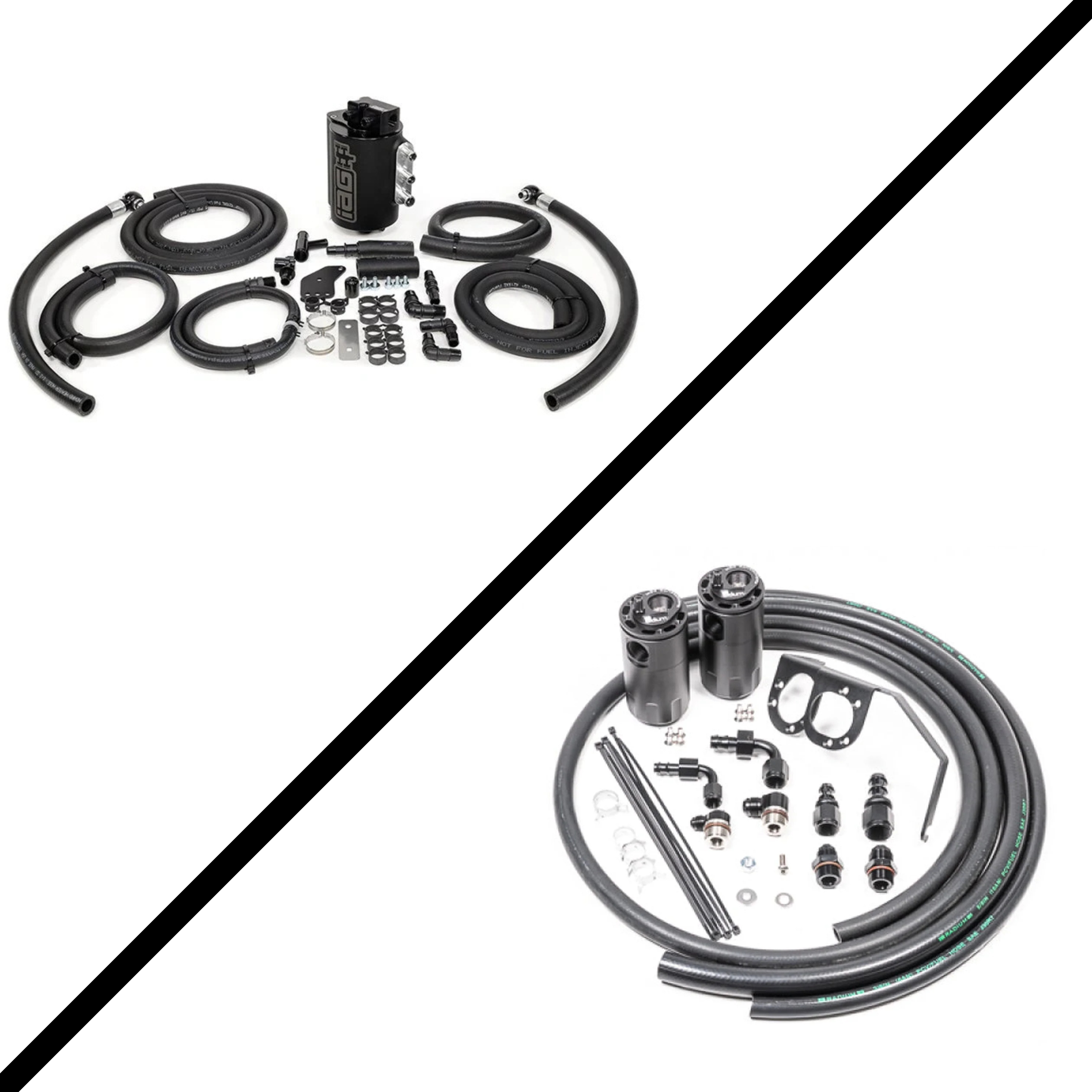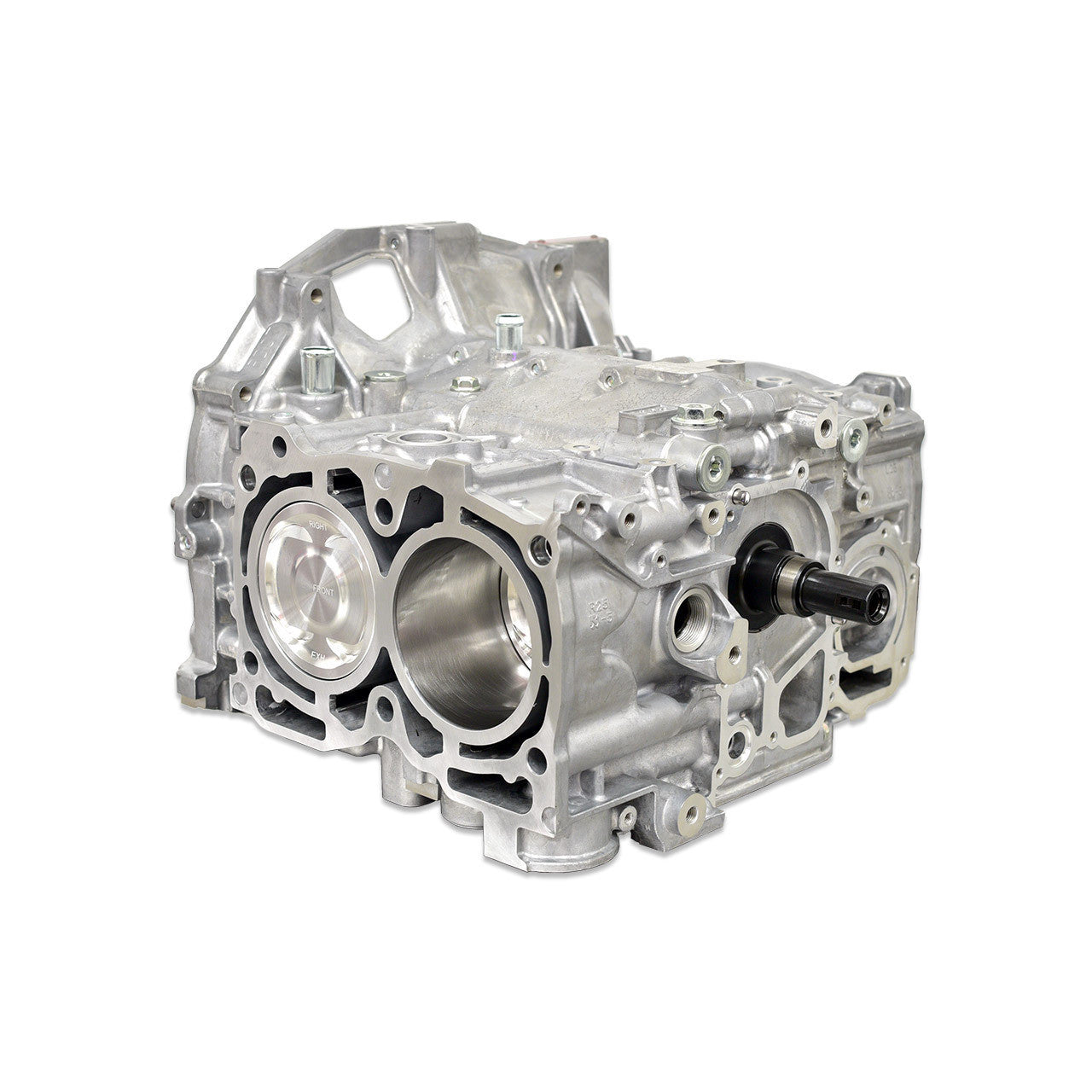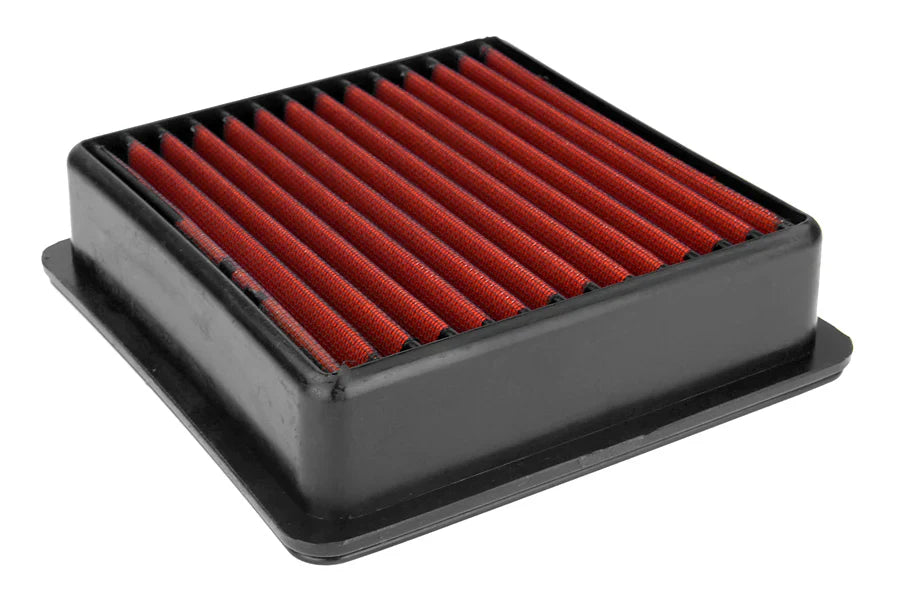
Air Oil Separator vs. Catch Can: Choosing the Right Solution for Your Turbocharged Subaru
When modifying or maintaining a turbocharged Subaru, one of the most important considerations is how to manage crankcase ventilation and oil control. Two common solutions are air oil separators (AOS) and catch cans. Both systems address the same core issue—preventing oil from re-entering your intake system—but they do so in different ways. Understanding their differences will help you make the right choice for your Subaru. Let’s dive into how each works, their pros and cons, and which scenarios they’re best suited for.
The Problem: Oil in the Intake System
Turbocharged engines, like those found in Subaru WRX and STI models, are particularly prone to oil contamination in the intake system due to high crankcase pressures. This oil can mix with air and fuel, reducing combustion efficiency and causing issues like:
-
Carbon buildup on intake valves (especially in direct-injection engines).
-
Reduced octane levels, leading to detonation or knock.
-
Clogged intercoolers, leading to less efficient cooling.
AOS and catch cans both aim to separate and capture this oil to prevent these problems, but they achieve this in different ways.
What Is an Air Oil Separator (AOS)?
An air oil separator is a device designed to remove oil vapor from the crankcase ventilation system and return the oil back to the engine. This is done using a series of internal baffles or chambers that separate the oil from the air before it is vented back into the intake.
Pros of an AOS
-
Maintenance-Free: The oil is separated and routed back to the engine, so there’s no need to empty or clean the device regularly.
-
Closed System: Keeps the system emissions-compliant by ensuring no vapors are vented to the atmosphere.
-
Better for Long Drives: Ideal for vehicles used for extended periods, like road trips or endurance racing, since there’s no risk of the reservoir filling up.
- Better for Use in Winter: Models such as the IAG AOS feature coolant circulation lines which will help prevent freezing in cold temperatures
Cons of an AOS
-
Complex Installation: Often requires more plumbing and may need modifications to fit in the engine bay.
-
Higher Cost: AOS units tend to be more expensive than catch cans.
-
Risk of Oil Return Issues: If not installed properly, oil can drain back into the wrong part of the engine, causing performance problems.
Best for:
-
Daily drivers and long-distance vehicles where low maintenance is a priority.
-
Track cars that need a reliable, long-term solution to manage oil vapor.
-
Enthusiasts looking to maintain emissions compliance.
What Is a Catch Can?
A catch can is a simpler device that captures oil vapor and blow-by gases from the crankcase ventilation system in a separate reservoir. Unlike an AOS, it doesn’t return the oil to the engine; instead, the oil collects in the can and needs to be emptied periodically.
Pros of a Catch Can
-
Simplicity: Easier to install than an AOS, often with fewer components and plumbing.
-
Lower Cost: Typically more affordable than AOS units.
-
Precise Containment: Ensures no oil vapor re-enters the intake system, as all oil is trapped in the can.
Cons of a Catch Can
-
Requires Maintenance: The reservoir needs to be emptied regularly, especially on vehicles with high blow-by.
-
Open Systems Can Be Non-Compliant: Some catch cans vent to the atmosphere, which may violate emissions regulations.
-
Limited Capacity: If the catch can fills up, it can lead to leaks or reduced efficiency.
- Not Ideal for winter use: Catch can systems generally do not feature coolant circulation lines like some AOS systems which help prevent freezing in cold termperatures.
Best for:
-
High-performance builds where capturing every drop of oil is critical.
-
Cars used for shorter drives or weekend track days, where regular maintenance is manageable.
-
Budget-conscious enthusiasts who need a quick solution.
Key Differences Between AOS and Catch Cans
| Feature | Air Oil Separator (AOS) | Catch Can |
|---|---|---|
| Oil Management | Returns oil to engine | Collects oil in a reservoir |
| Maintenance | Minimal (no emptying needed) | Requires regular emptying |
| Cost | Higher | Lower |
| Installation | More complex | Simpler |
| Emissions Compliance | Fully compliant (closed system) | May be non-compliant (open system) |
Choosing the Right Option for Your Turbocharged Subaru
When deciding between an AOS and a catch can, consider your specific needs and how you use your Subaru:
Choose an AOS if:
-
You prioritize convenience and minimal maintenance.
-
Your car is a daily driver or used for long-distance travel.
-
You want to maintain emissions compliance.
-
You’re willing to invest in a higher-cost solution for long-term reliability.
Choose a Catch Can if:
-
You’re on a tighter budget.
-
Your car is a weekend warrior or track-only build.
-
You’re comfortable with regular maintenance.
-
Emissions compliance isn’t a concern (e.g., in off-road applications).
Final Thoughts
Both air oil separators and catch cans play an essential role in protecting your turbocharged Subaru’s engine from oil contamination. While an AOS offers convenience and long-term reliability, a catch can provides a simpler and more cost-effective solution. Carefully assess your driving habits, maintenance preferences, and budget to make the right choice. Whichever route you take, managing crankcase ventilation effectively will pay dividends in performance, reliability, and engine longevity.




Leave a comment
This site is protected by hCaptcha and the hCaptcha Privacy Policy and Terms of Service apply.